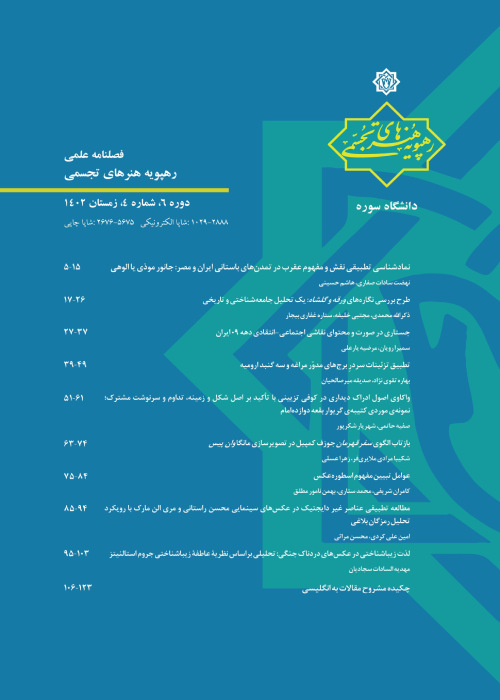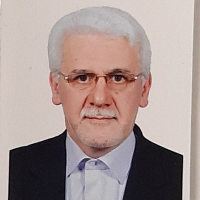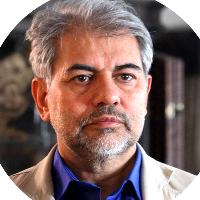Significance of Similarity and Difference Components in the Expression of Identity and its Impact on Urban Graphic Design
Acquiring identity and getting rid of its crisis has always been an important issue for human societies. Man is human because he is an identity-making being, therefore, social identity is one of the main modern concerns of urban man. Since “identity” is a set of attributes that distinguish an individual or a community from other individuals and societies; Urban graphics, according to these criteria, become personalized and independent. In the meantime, the similarity of individuals to each other for the acquisition of collective identity and the difference between the individual and others for their distinction for personal identity is a contradiction that always challenges urban graphic designers. Therefore, the purpose of this study is to investigate the two components of similarity and difference and their function in urban graphic design and find new ways to identify urban places. The results of the above research show that the components of similarity and difference in urban graphics are able to extend the dialectical model of identity to something beyond mere sociability. In this regard, identification in urban graphics lies in the difference that individuals have in individual lives, and to some extent they are made of similarities in their collective identities. Thus, urban graphics are one of the important tools that lead to recognizing the similar and unique characteristics of citizens while maintaining their differences. The present research has been done with a qualitative method and library studies, and after obtaining the initial data, the data have been analyzed using the content analysis method. The city is a dynamic and extensive social complex in which three levels of movement, mechanical, biological and social are intertwined and associated with various types of sub-complexes and sub-complexes. Obviously, urban identity is a collective identity that becomes meaningful by objectively crystallizing in the physics and content of the city and leads citizens to become citizens by creating an association of public memories in citizens and belonging to them. Therefore, although the identity of the city is itself a consequence of the culture of its citizens, but it affects the process of citizenship and can lead to the development of criteria related to participation and judgment of observers and residents. In the field of urban identity studies, urban graphics is a complex and multidimensional concept that is currently used by experts and practitioners to express the desired desires and aspirations for a good and ideal city. In this study, researchers intend to examine identity in urban graphics in both individual and social contexts, and among these, the main focus is on addressing the two components of similarity and difference in identity. Therefore, the present study was conducted to investigate the significance of similarities and differences in identity expression and its effectiveness in urban graphics. The results of the present study allow us to examine individual and collective dialectics among the citizens of an urban society and emphasize the critical role of urban graphics in determining the identity of citizens. These results are:-Urban graphics are a great way to think about how the city can help people identify and turn an external definition into an internal definition of similarities and differences, and can transform the dialectical model of identity. Expand to something beyond mere sociability. In this regard, the determination of urban identity lies in the difference that individuals have in individual lives and to some extent are made of collective identities. Thus, urban graphics are one of the important tools that lead to recognizing the similar and unique characteristics of citizens while maintaining their differences. -Ethnicity, gender, history and lineage, religion, occupation and class, place of residence, etc. are all characteristics that are intertwined in a contemporary city, and this pluralism is an increasing need for a common denominator. It reflects a group and a group by observing the similarities and differences of individuals, and therefore this interaction must be created in the right way. These conversations between citizens and urban graphic elements transcend the boundaries between the individual, the group, and the city, creating an umbrella of solidarity and cohesion under which all individuals can take refuge. - The importance of urban graphics and human identity on the one hand and the importance of discussing identity crisis in the present age due to globalization and unwarranted dominance of technology and especially the virtual world in the age of communication on the other hand, is one of the most important reasons This is the problem. - Since the impact of the environment on humans and vice versa has been fully proven, and even in a dimension beyond the impact of the environment, we can refer to the direct relationship between environmental identity on humans and vice versa, as well as environmental identity crisis on humans and vice versa. Identity in urban graphics and its management is mandatory. - In addition to the effects mentioned above, the presence of human beings in the environment and urban spaces is an undeniable and even mandatory presence, and therefore these effects are completely involuntary and it seems that by controlling and managing the conditions of the spaces, the type of effect and The relationship between man and space must be controlled.
-
A Comparative Study of Horse Images in Iranian Paintings (Ilkhānid Period) and Chinese Art (Song and Yuan Periods)
Bahareh Moayeri *, , Syyed Abutorab Ahmadpanah
Negareh journal, -
The Romantic Gaze: The Romantic Gaze: the phenomenon of the visual in the Majnun and Leyla Painting of Jami’s Haft Awrang, the Mashhad School in Comparison with Poetic Narratives of Jami and Attar
Monireh Panjtani *,
Journal of Mysticism Studies in Literature, -
An Examination of Relativism in Richard Mervyn Hare's Moral Philosophy
Mahdi Misaghinezhad, Mahdi Najafiafra *,
Ayeneh Marefat, -
A Comparative Study of Mullā Ṣadrā’s and Shaykh Aḥmad al-Aḥsāʾī regarding the Fate of the Human Body after Death
Sasan Yaghmaei, Muhammad Ekwan *, Enshallah Rahmati
Journal of Imamiyyah Studies, -
Analyzing the Concept of Private Language in Art as a Social Matter with a View to Wittgenstein's Play-Linguistic Theory (With Emphasis on the Element of Color in Urban Graphic Design)
, *, Parnaz Goodarzparvari,
Journal of Visual and Applied Arts,




